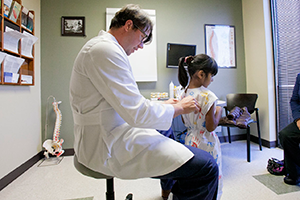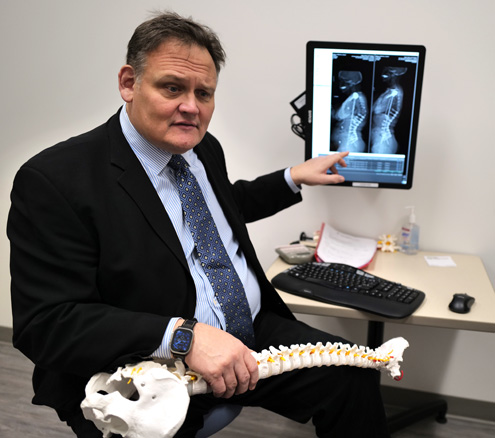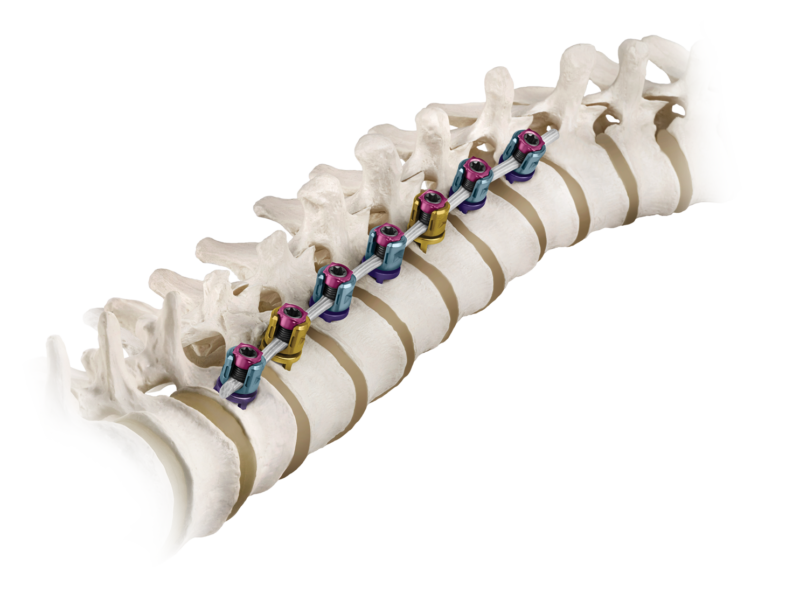
Learn more about the providers at Texas Spine and Scoliosis, the only spine specialized neurosurgery, orthopedic surgery, and non-surgical rehabilitation group in the central Texas area.
Anterior Lumbar Interbody Fusion helps relieve low back pain or leg pain caused by degenerative disc disease.

The mini-open ALIF is performed with the patient lying on their back, usually under general anesthesia. Fluoroscopy helps guide the surgeon during the procedure. The incision is made in the lower abdomen and is usually less than 2 inches in length. A common approach is for the surgeon to retract the abdominal muscles in order to access the spine to remove the damaged disc. This leaves an open space that needs to be filled in order to stabilize the spine. A small cage made of plastic polymer or titanium is filled with bone graft and then placed in the empty space. The bone graft fuses the vertebrae and helps stabilize the spine. If additional support is needed, the surgeon will use rods and screws to further stabilize the spine.
An advantage of the ALIF procedure over a more extensive posterior approach is that the incision is made in the abdomen instead of the back. This allows the back muscles and nerves to remain undisturbed. This procedure is
generally performed in an outpatient setting or
23 hour stay. Patients are usually able to return to an active lifestyle without restrictions quicker than with traditional spine surgery.
| Approach | Full Name | Access Route | Typical Levels Treated | Muscle Disruption | Advantages | Risks/Limitations |
|---|---|---|---|---|---|---|
| TLIF | Transforaminal Lumbar Interbody Fusion | Posterior (from the back, side of spinal canal) | L2 to S1 | Moderate | Good disc space access; unilateral approach reduces nerve retraction | Nerve root injury risk; limited disc space visualization |
| XLIF | Lateral Lumbar Interbody Fusion (eXtreme) | Lateral (through psoas muscle) | T12 to L5 (not L5-S1) | Minimal | Large graft placement; minimal blood loss | Risk to lumbar plexus; not suitable for L5-S1 |
| iLIF | Interlaminar Lumbar Interbody Fusion | Posterior (between spinous processes) | L2 to S1 | Minimal | Preserves stabilizing structures; reduced blood loss | Technically demanding; newer technique, limited long-term data |
| PLIF | Posterior Lumbar Interbody Fusion | Posterior (midline) | L2 to S1 | High | Direct access to disc; bilateral cage placement possible | More muscle disruption; higher blood loss |
| ALIF | Anterior Lumbar Interbody Fusion | Anterior (through abdomen) | L4 to S1 | Minimal (no back muscle disruption) | Wide disc access; large implant size possible | Major vessel injury risk; requires vascular access surgeon |
Texas Spine and Scoliosis is a regional referral center for the treatment of back and neck pain and scoliosis

Learn more about the providers at Texas Spine and Scoliosis, the only spine specialized neurosurgery, orthopedic surgery, and non-surgical rehabilitation group in the central Texas area.
 Texas Spine & Scoliosis approved for the new BRAIVE scoliosis tethering study
Texas Spine & Scoliosis approved for the new BRAIVE scoliosis tethering study

Read about various patient success stories that have been performed by the physicians at Ascension Texas Spine & Scoliosis